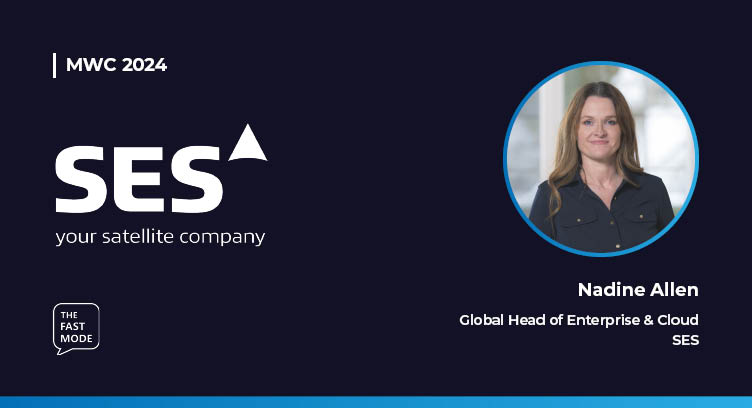Following the successful culmination of MWC Barcelona last week at the Fira Gran Via, Ariana Lynn, Principal Analyst at The Fast Mode spoke to Nadine Allen, Global Head of Enterprise & Cloud at SES on the company's participation at the event.
Ariana: What were some of the key themes of this year's MWC?
Nadine: At MWC this year, we focused on the themes of digital transformation and the positive impact our satellite technology has on society. In partnership with our customers and leading industry players, we showcased how we are delivering high-performance satellite connectivity services over our multi orbit geostationary (GEO) and medium earth orbit (MEO) satellites to improve outcomes in a number of dimensions. Areas to highlight are the support of governments’ initiatives for digital inclusion for their citizens and the use of high throughput, low latency connectivity to help enterprises realise their digital transformation plans. Given SES’s strong partnership philosophy, we also collaborate with partners to develop innovative connectivity solutions as in the case with NTT with whom we are developing a private 5G service that we demonstrated together during the event.
Ariana: What were some of the events that SES had lined up? Any showcases?
Nadine: Beside the live demos and the business talks delivered jointly with our partners, we signed an MoU with CelcomDigi on a strategic partnership to explore how they can leverage SES's MEO satellite connectivity services with high throughput and low latency capabilities to serve businesses and communities in the region. We also signed a new project with long-term partner INRED where we will be jointly providing Wi-Fi services to 300 additional remote sites across Colombia. The connectivity services delivered via our high throughput GEO satellites will support Colombia’s Ministry of Information and Communication Technologies’ digital inclusion project.

Ariana: What's the outlook for telecoms, specifically the mobile industry in the next 12 months?
Nadine: In 2024, telecoms will look to expand their global reach and deliver access that enables cellular services (5G and Private 5G), cloud, edge compute, IoT and Digital Twins, which all require high-performance network connectivity. Satellites can play a key role in improving telecoms’ reach and capacity, serving as either a primary connectivity provider or as a backup to traditional fiber-based terrestrial networks. Private 5G networks will be a key growth driver for telecom providers as demand from enterprises continues in 2024. Telecoms will also look to integrate more closely with major cloud providers in 2024, and satellite direct-to-cloud can help to facilitate this integration.




















